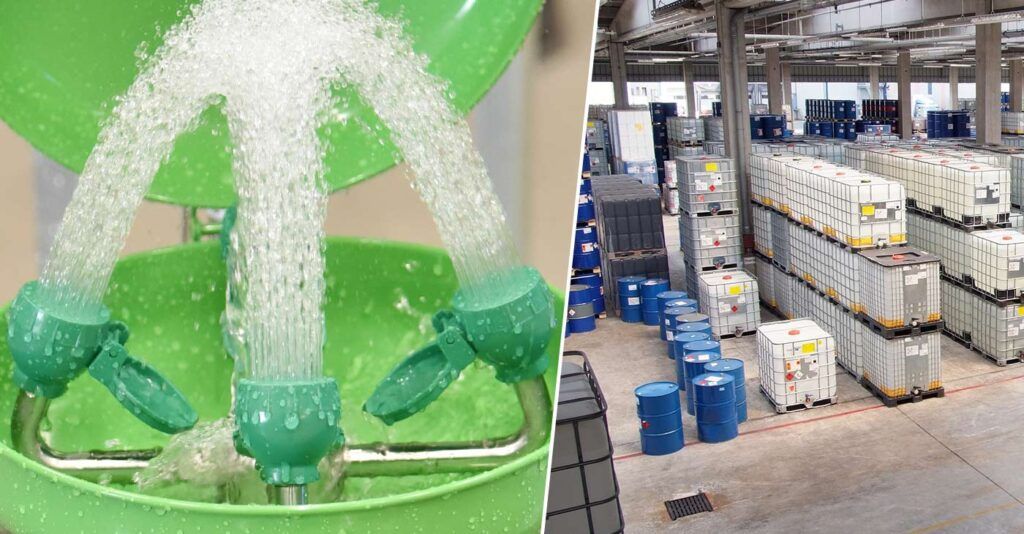Emergency showers are defined as safety mechanisms designed to provide immediate decontamination by delivering a large volume of water through a showerhead. These devices are specifically intended to assist in cases of chemical spills or exposure. They are essential in various workplaces, laboratories, and industrial settings. Understanding these crucial devices is vital for maintaining workplace safety standards and preventing accidents.
What defines an emergency shower?
An emergency shower is a specialised safety device designed to provide immediate and thorough decontamination in case of chemical exposure or spills. It typically consists of a large, overhead shower head connected to a water supply, along with a pull handle or valve for easy activation. The purpose of an emergency shower is to quickly flush off harmful substances from the body to minimise the risk of injury or harm. This aligns with the general definition of an emergency shower used in various safety regulations and standards.
How does an emergency shower work?
When an emergency occurs, such as a chemical spill or splash, the exposed individual must reach the nearest emergency shower as quickly as possible. After pulling the handle or activating the valve, the shower releases a continuous stream of water at a consistent pressure. This water flow is crucial for effectively diluting and washing away any hazardous chemicals present on the skin or clothing. Understanding the operation of an emergency shower is vital for effective emergency response and safety compliance. To learn more about how to establish safety in the industrial workplace, visit this website.
The key components that define an emergency shower
- The showerhead
Designed to deliver a wide spray pattern, ensuring maximum coverage of the affected area. This component is critical for effective decontamination. - Water supply
Connected to a reliable water source, either through the building’s plumbing system or a dedicated water tank, ensuring adequate and consistent water flow. - Activation mechanism
Most safety showers feature a pull handle or lever that activates the water flow when pulled or pushed. This design allows for quick and intuitive operation during emergencies, which is crucial for timely decontamination. - Eyewash attachment (optional)
Some showers also include an integrated eyewash station for additional decontamination of the eyes in case of chemical exposure. This dual functionality enhances the overall safety capability of the device. - Emergency shower signage and visibility
Proper signage and visibility are essential for locating emergency showers easily within a facility. Clear markings and unobstructed access ensure that individuals can quickly reach the shower when needed. This component is vital for ensuring the device can be used effectively during an emergency.

Importance of having safety showers accessible within 10 seconds distance
Emergency showers play a critical role in mitigating the effects of chemical exposure and preventing severe injuries in the workplace. By providing prompt decontamination, these devices help minimise the spread of hazardous substances and reduce the risk of long-term health consequences. Emergency showers must be accessible within 10 seconds, which generally translates to about 15-20 metres from the hazard, depending on the layout of the workspace.
These showers should be clearly marked with visible signage, well-lit, and free from obstructions to ensure they can be easily located and used in an emergency. Additionally, the presence of emergency showers demonstrates a commitment to safety and compliance with regulatory standards, such as those set by ANSI and OSHA, fostering a culture of preparedness and risk mitigation in the workplace. To read more about the handling of dangerous chemical products in the workshop, visit Automobilly.com.
Regulatory standards
Emergency showers must comply with regulatory standards such as those set by ANSI and OSHA. For example, ANSI Z358.1-2014 specifies that the water temperature should be tepid (16-38°C) and that the shower must deliver a minimum of 75.7 litres per minute for at least 15 minutes. Regular maintenance and inspections are required to ensure compliance and functionality. More about these regulations is available on OSHA.gov.
Conclusion to the definition of an emergency shower
In conclusion, emergency showers are defined as specialised safety mechanisms designed for immediate and thorough decontamination in case of chemical exposure or spills. These showers are essential in various environments, including workplaces, laboratories, and industrial settings, where they help protect individuals from the harmful effects of hazardous substances. Adhering to standards set by organisations such as the American National Standards Institute (ANSI), the Occupational Safety and Health Administration (OSHA), and the European Norm (EN), companies can ensure that their emergency showers meet rigorous safety and performance criteria. By understanding the importance and proper use of emergency showers, companies can enhance their safety measures, ensure regulatory compliance, and foster a safer working environment. Investing in these life-saving devices is a crucial aspect of maintaining a responsible and secure workplace.

























